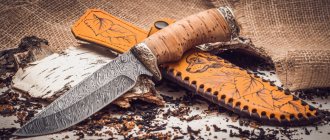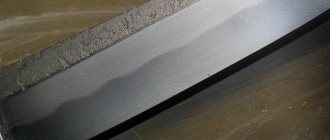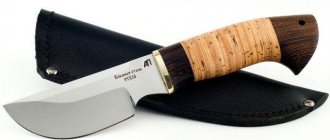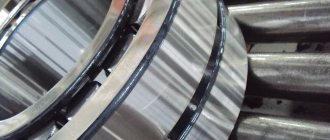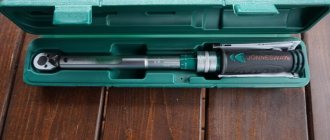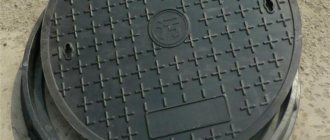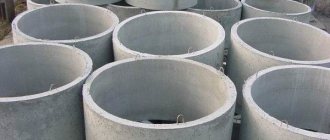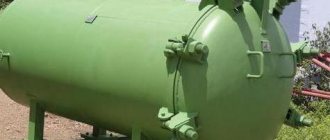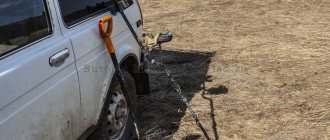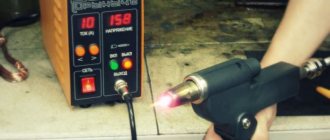Rounding machines are the main components of wood processing lines, which are applicable both in standard workshops and in the manufacture of similar products with your own hands. The main function of this machine is to remove the smooth top layer from each log using a milling cutter with a complex design and different types of knife sharpening.
Log rounding machine
Currently, there are a huge number of similar products of various types and purposes on sale, among which it is not at all difficult to choose the equipment that is ideal for your case.
Equipment use
Modern machines make it possible to carry out rounding so that the prepared log is suitable for installation in wall structures without finishing. The functionality can vary significantly, depending on the design features of the rounding machine and its cost.
When considering all drawings and models of equipment that is used for rounding logs, attention should be paid to the following points:
- Creation of grooves that can be used during installation to solve various problems.
- Production of edged boards, parquet, dies.
- Carrying out cylindering work, including the final stage of the task under consideration.
- Milling the surface of wood to achieve the desired roughness.
- Creating a crown cup.
- Production of gun carriages by cutting wood.
- Creating an expansion groove using an installed circular saw.
One should take into account the fact that a self-made rounding machine may not have all the functions, since for this purpose complex projects must be used in its production. The easiest way is to create non-universal equipment that is designed to solve specific problems, for example, rounding workpieces.
How to make a rounded log
The full production cycle of rounded logs includes several more stages:
- Sawing out lunar and compensation grooves
- Tortsovka
- Cup cutting
- Antiseptic treatment
- Warehousing
- The lunar (also called longitudinal) groove is necessary for a tight fit of the logs in the log house, and the compensation groove is necessary to minimize the likelihood of the formation of large cracks during drying and shrinkage.
- Trimming is cutting a processed log into pieces, a kind of “cutting out” the details of the future house.
- Cutting cups is the excavation of special semicircular recesses that exactly repeat the shape of the logs of adjacent crowns placed in them.
- Treatment with an antiseptic is a mandatory procedure in the production of rounded logs. Wood impregnated with special water-based compounds not only retains all its natural properties, but also acquires increased resistance to the influence of negative atmospheric factors and pest attacks.
- Warehousing is the phase that completes the factory part of the work. Behind the apparent simplicity of this process lies a well-thought-out technology: the logs must be stacked in such a way that their natural ventilation is ensured. This is necessary to prevent the formation of blue stains and mold in the natural moisture log.
Only after all these stages can the log be called rounded according to all the rules, and is it ready to be used for its intended purpose - to become part of a perfect log house.
Features of modern industrial models
The main feature of machine models produced by well-known manufacturers today is the use of a laser pointer to control the movement of the carriage. This point determines high processing accuracy and the ability to carry out the entire process without reinstalling the workpiece. Thus, a CNC-controlled carriage with a set of tools moves along guides and performs various types of operations.
Log rounding machine
As practice shows, you can make a model with your own hands that will have manual control and the ability to process workpieces up to 7 meters long.
How to build houses from rounded logs
The sequence of stages in the construction of rounded log houses is no different from the algorithm of any construction: design - foundation - walls - roof - communications - finishing. But the construction of walls has its own interesting features.
After completion of factory processing, the log set is supplemented with the necessary lumber, packaged and sent for assembly to the customer’s site, that is, the most labor-intensive operations are transferred from the construction site to the factory workshops. At the site, a team of assemblers only places numbered logs into crowns in accordance with the design diagram (log plan).
This mechanization of the process significantly speeds up and reduces the cost of construction.
Features of the design of the design in question
When considering what kind of homemade rounding machine drawings may have, we note that often the design has the following elements in one form or another of their implementation:
- The main and most cumbersome element is the frame. It is on it that stress is concentrated and all other elements are attached. When making the frame, it is recommended to use rectangular pipes. The connection of all elements is often carried out using welding, which allows you to speed up work and create a truly durable structure. However, it is possible to create a frame using a combination of a bolt and a nut. Collapsible frames are more mobile, but have less rigidity.
- Guides along which the power saw and sawing device will move. The length of the logs can reach several meters and weigh tens of kilograms. In order to significantly simplify the processing task, you should create a homemade rounding machine on which the tool moves, and not the workpiece.
- Pasterns: front and back, in some cases, only one. They are necessary to twist the logs during processing. Note that the front one quite often has a dividing head and a workpiece fastening system. Using the dividing head, you can set the rotation angle at each stage of processing, which is necessary to improve the quality of the workpiece.
- As a rule, a milling cutter is used as a cutting tool. There are quite a lot of types of this cutting tool. When considering how to make a cutter with your own hands, we note that the work is complex and involves the use of rolled tool steel, which has increased strength and a low degree of machinability.
- A high-quality cutter has replaceable knives that can be sharpened and replaced if necessary. The cutter itself does not wear out over time.
- To correctly place a log that has a lot of weight, special levers are installed.
- The rollers, acting as a stop, do not allow the log to sag during processing, thereby significantly increasing the quality of the resulting material.
- Almost all models have mechanical brakes that are installed on both sides of the carriage. They are necessary to perform the work of selecting the crown bowl.
- A device that allows you to rotate the steel manually at the time of cutting a longitudinal groove.
These elements have many drawings that you can use to create a rounding machine with your own hands at home. However, the design can be significantly simplified by taking into account the problems for which it is being created.
Projects of houses made of calibrated logs
When ordering construction from MariSrub, even individual projects are free.
The finished projects were created taking into account the main market trend - increased demand for comfortable, medium-sized housing at a reasonable price. But the catalog includes small country houses with an area of 29 m2, and luxury cottages with an area of up to 358 m2. An automatic cost calculation system simplifies the task of drawing up a “preliminary estimate” depending on the type of log.
Why exactly a log?
First, let's find out what a rounded log is and why the vast majority of people prefer to build housing from it.
Important: speaking in the dry language of definitions, a rounded log is usually called a straight tree trunk, pre-processed on woodworking machines to give it the correct cylindrical shape. As a result, the top uneven layer and knots are removed, and compensation and mounting grooves are applied.
Scheme of a rounded log.
Advantages of the material
Having clear geometric dimensions, this material fits perfectly together. Specially designed grooves ensure high tightness and quality of inter-crown seams.
- Although the price of rounded logs may be higher than that of many competitors, such houses do not require additional internal and external cladding. This material itself has natural beauty, as a result of which owners save significantly on finishing.
- Modern woodworking equipment makes it possible to initially produce trunks with ready-made connecting elements. This significantly speeds up the construction process and gives a lot of layout options.
- You may have already heard that natural wood breathes. This means the ability of the array to take excess moisture from the air and release it when conditions change. Simply put, wood is a natural air conditioner, providing an ideal microclimate for human life in the house.
- And finally, the construction instructions are quite accessible. A good owner, with a strong desire, can build a simple bathhouse, barn or small country house with his own hands.
Some product characteristics.
What are the disadvantages
- As we have already said, wood is a living material, so over time the wood begins to dry out and crack. This is true, but thanks to modern impregnations and primers for wood, such processes can be significantly slowed down.
- Many people know that during the process of growth, a tree trunk slightly twists in a spiral. After the cut, this spiral sometimes begins to unwind. This is why craftsmen do not recommend building from freshly cut timber; the structure may fail. But a dry rounded log does not have this drawback.
- Disadvantages such as high fire hazard and susceptibility to biological pests are easily eliminated using the same specialized impregnations.
- Perhaps the only significant drawback of any wooden structure is the high percentage of shrinkage of new houses. Well-dried, high-quality wood shrinks up to 100 mm for every 3 - 4 m of wall in the first year. And 10 - 20 mm each for another 2 - 3 years. Freshly cut timber will take up to 10 years to shrink.
Mechanical restoration
For the first time, the production of rounded logs began in Finland. It was there that mechanically processed tree trunks came to replace the logs obtained as a result of centuries-tested felling. Chopped (hewn) logs had to be matched to each other in order to build a wall, which made the work more expensive, while rounded logs, which, of course, required certain material costs at the stage of mechanical processing, were easily “lined up” in a straight line wall.
So, we found out that the logs undergo mechanical processing. What is it? First, suitable tree trunks are found. Since you need to build a log house from long logs, not all trees are suitable. And the density of the wood must be appropriate. Most often, coniferous trees are taken - pine, spruce, larch, cedar. The most common log cabins are made from pine - it grows more widely, which means it costs somewhat less than, for example, cedar or larch, the growth area of which is quite narrow.
So, the appropriate tree trunks are selected. It just so happens in nature that trunks do not have the same diameter along their entire length, but we need the same diameter, so cylindering machines are used for this.
What affects performance
To determine the basic parameters of the material, there is a set of regulations. In our country this is GOST 2708-75, in the west ISO 4480-83. There is no big difference between them, the main parameters are identical. It is on this data that a program such as a calculator for rounded logs of volume, weight, density and other characteristics is based.
Array volume table.
Advice: it is desirable that the table of volume of rounded logs be original, that is, taken from the above-mentioned regulatory documents. Since now there are many corporate tables compiled taking into account the commercial interests of some corporations and containing inaccuracies that are beneficial specifically for those who compiled them.
Machines and equipment
Even 50 - 100 years ago, every carpenter or just a good owner knew how to round a log at home. Due to the fact that this occupation is long and very labor-intensive, with the development of woodworking production there are not many real specialists left.
Of course, in the debate about whether a log or a rounded log is cheaper, an ordinary unprocessed trunk wins. But building a good house or a high-quality bathhouse from “wild” material is almost impossible. Apart from the time spent on handicraft cylindering and labor-intensive installation, you will not be able to seal the seams and joints hermetically. Accordingly, the room will be cold and will not last long.
A machine for cylindering logs is, in fact, a symbiosis of milling and turning functions. Such equipment has impressive dimensions and includes a common metal frame on which they are based, a power unit, which can consist of several power units.
The main work is done by the headstock. It is on it that cutters for stripping the top layer and figured cutters for finishing the log are installed. The tailstock, as in most similar equipment, serves to fix and feed the workpiece itself.
If you want to know how long it takes to make a rounded log, then in this case it depends on the quality and functionality of the equipment. Modern automated lines are capable of turning a high-quality calibrated product from natural logs in a matter of minutes, according to specified parameters.
All such units come in two types - continuous and cyclic. The first ones are designed for large production volumes and have a minimum of functions. In them, the material moves in a continuous flow and, passing through the working area, is cylindered and milled.
Installing the workpiece on the machine.
Aggregates of the cyclic type perform a given algorithm of actions, after which the cycle is repeated. They, in turn, are divided into cyclo-pass type, where the barrel moves and the carriages are in a fixed position. And cyclo-positional, where the log is motionless and the carriages move around the workpiece.
As a rule, a do-it-yourself machine for a cylindrical log is made on the basis of a sawmill, where a stop is installed instead of the front cone, and the tailstock is replaced with a bearing or a rotating cone. The workpiece secured in this way rotates due to an additional drive or with your own hands, which is very difficult and inconvenient.
Processing is carried out by a milling head mounted on separate guides. The very principle of operation of such a handicraft unit is reminiscent of the operation of a wood milling machine. A rotating workpiece is gradually processed by a milling cutter moving along guides.
Advice: due to the serious weight of the workpieces themselves, experts recommend rigidly mounting such equipment exclusively on a concrete base. If this is not available, as an option, you can lay a reinforced concrete slab for the floor.
General diagram of the machine.
A few words about the characteristics
Domestic production is more focused on the so-called lunar profile of rounded logs. It contains a mounting cup for connecting the crowns and a compensation cut.
This cut serves to compensate for the natural internal stress of the array, as well as temperature and humidity expansion. Such a product is cheaper to manufacture, plus it does not require careful preliminary preparation of the material.
The Finnish profile provides a tighter connection of the crowns; therefore, less sealing materials are needed, but the log requires careful drying and preparation, as a result the price of the Finnish profile is higher.
The working height of the rounded log is 6 meters. This does not mean that products cannot be larger or smaller.
It’s just that most technological lines are oriented towards this size. An increase in height entails an increase in cost. The price of smaller barrels depends on the quality and complexity of processing of a particular product.
Storing goods in stacks.
As for the diameter, the working range here ranges from 160 to 320 mm. Rounded logs of 400 mm or more are processed on special machines. Such non-standard goods are used to equip the main crowns of the building, as well as other important load-bearing units. In addition, the walls of the first floors for multi-storey cottages are sometimes erected from logs with a cross-section of 400 mm.
The cost of the product is greatly influenced by the method of drying the massif. Natural drying takes place for about six months under open sheds in natural conditions. Such a product costs less, but its shrinkage is higher.
Chamber drying involves processing the material in special high-temperature chambers. Such a log shrinks less and is considered to be of higher quality.
Important: glued rounded logs appeared on the market relatively recently. The price for such products is much higher. But, according to experts, they are of exceptional quality.
The video in this article contains materials on this topic.
Disadvantages of rounded logs
There are much fewer of them than indisputable advantages, and they are rather relative than absolute, and mostly far-fetched.
- If concern for the safety of one’s own home is considered a disadvantage, then, of course, log houses are not without it.
But a building made of any material needs to be looked after: for the facades of stone, concrete, frame, prefabricated panel and any other houses, specific means have been developed to ensure their safety and decorative properties. There are also ones for log houses made of rounded logs: these are protective impregnations. The frequency of their use depends on the composition and ranges from one year to 15 years.
- Shrinkage is the next point of accusation.
Yes, all wooden houses require a certain period for shrinkage - these are the characteristics of wood. But waiting a maximum of a year is not such a huge price to pay for the opportunity to live in a truly breathable and environmentally friendly house without any reservations.
- Flammability.
Fire retardants solved this problem long ago, and wood is a combustible, but not flammable material. Unless you build a fire directly on the wooden floor in the center of the living room, the risk of a fire in a rounded house is the same as in any other structure. By the way, any building materials burn, but the degree of toxicity of their smoke varies greatly - and wood in this regard is clearly not among the dubious leaders.
Prices for rounded logs
The average market cost of a cubic meter of rounded logs of the most popular caliber 240 mm, ready for assembly into a log house, is about 8,200 rubles. But the log is not purchased for storage on the site, but for the construction of a house from it.
The designer and manufacturer do not need the cubic capacity, but the number of whole logs that will be required for all wall elements, made taking into account the connecting points, openings and other details.
Therefore, you need to focus on the cost of a finished square meter and not believe advertising traps promising record low prices per cubic meter.
Optimal diameter of logs in a house for permanent residence
To keep a house with an area of about 100 m2 warm in Russian latitudes, logs with a diameter of 220-240 mm are sufficient. For large houses over 200 m2, it is more rational to use a log of a larger cross-section - 240–280 mm.
The thermal insulation properties of the future log house wall largely depend on the parameters of the log: the larger the log in diameter, the fewer crowns will need to be laid, therefore, the fewer joints there will be - the main potential source of heat loss. Residents of such a house will not freeze in the cold or swelter in the heat in the summer and will be able to save on heating and purchasing air conditioners.
If we take into account the aesthetic side of the issue, then we need to focus on proportionality and a sense of proportion. A small log house made of thick logs will look more like a bunker than a fairy-tale tower, and a spacious cottage assembled from thin logs will give the impression of an amateur model of a princely mansion made from matches.
